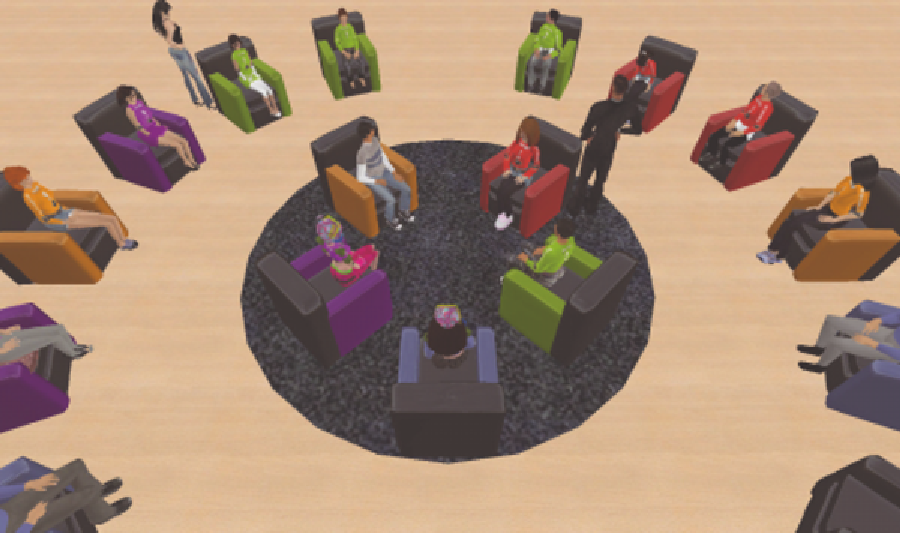Graphics Programs Reference
In-Depth Information
everyone works together. Also, the Jigsaw tech-
nique is a typical method for researching certain
collaborative interactions in a virtual environ-
ment. This “cooperation by design” facilitates
interaction among all students in the class, leading
them to value each other as contributors to their
common task.
A certain study topic was assigned to each
Jigsaw group. The study topics included:
Next, each group member selected a specific
theme to specialize in. This theme is what next
defined the expert groups that formed in the second
phase. The students could choose from these tasks
to complete: 1) Review technologies supporting
VLEs, 2) Collect VLE operational and usability
requirements, 3) Record presentation and design
methods of VLE scenarios (e.g., UML, use cases,
etc.), or 4) Record VLE evaluation frameworks.
After studying for a week, in the second phase,
the students were reorganized into four expert
groups as dictated by the Jigsaw collaborative
learning technique, and their choice of specializa-
tion theme. The deliverable of this second phase
necessitated a presentation by each team from
within the SL environment, in the form of the
Fishbowl collaborative learning technique (as
presented in Figure 5). In this technique, students
form concentric circles with the smaller, inside
group of students discussing and the larger, outside
group listening and observing.
•
Design and implement a VLE, in order to
support learning through communities of
practice
•
Study 3D virtual environments supporting
CSCL, in general
•
Study adaptive collaborative learning
environments
•
Develop a 2.5D adventure game as a VLE
•
Design and implement a VLE, in order to
support problem-based learning
Figure 5. Discussion during the Fishbowl collaborative learning technique

Search WWH ::

Custom Search